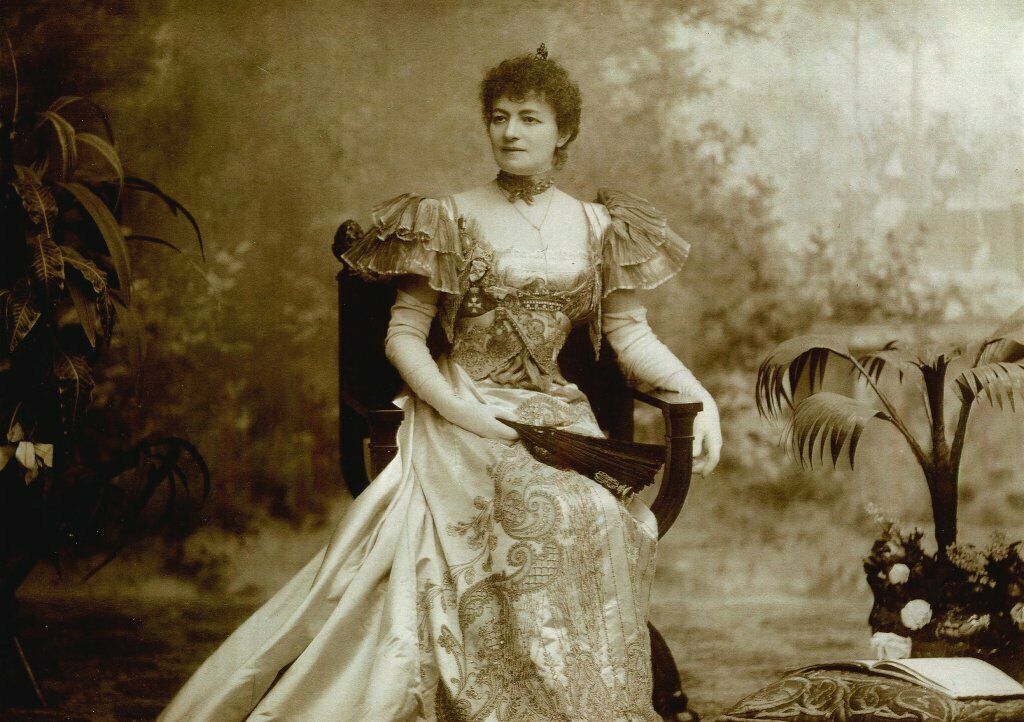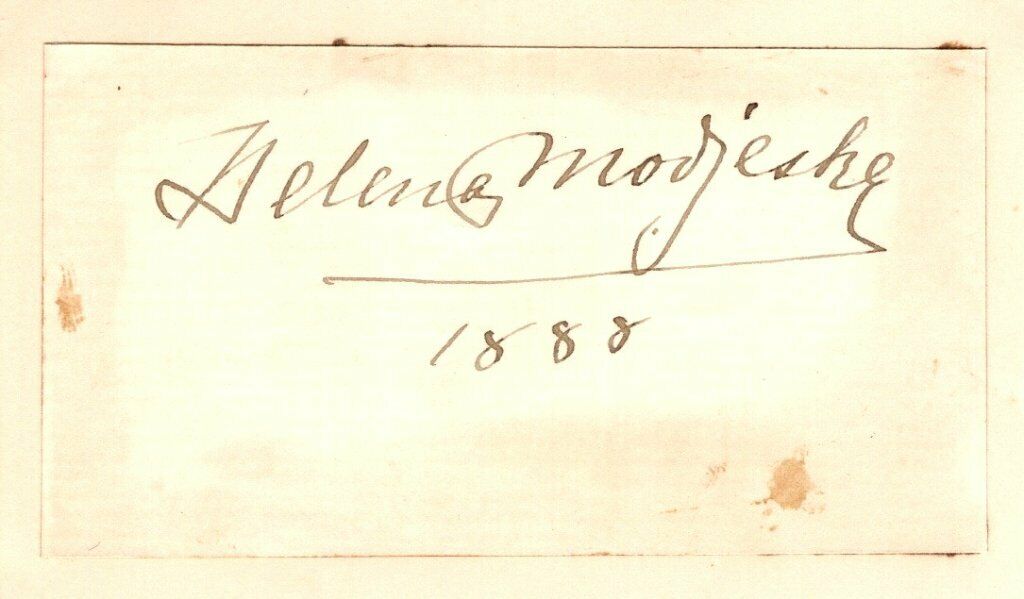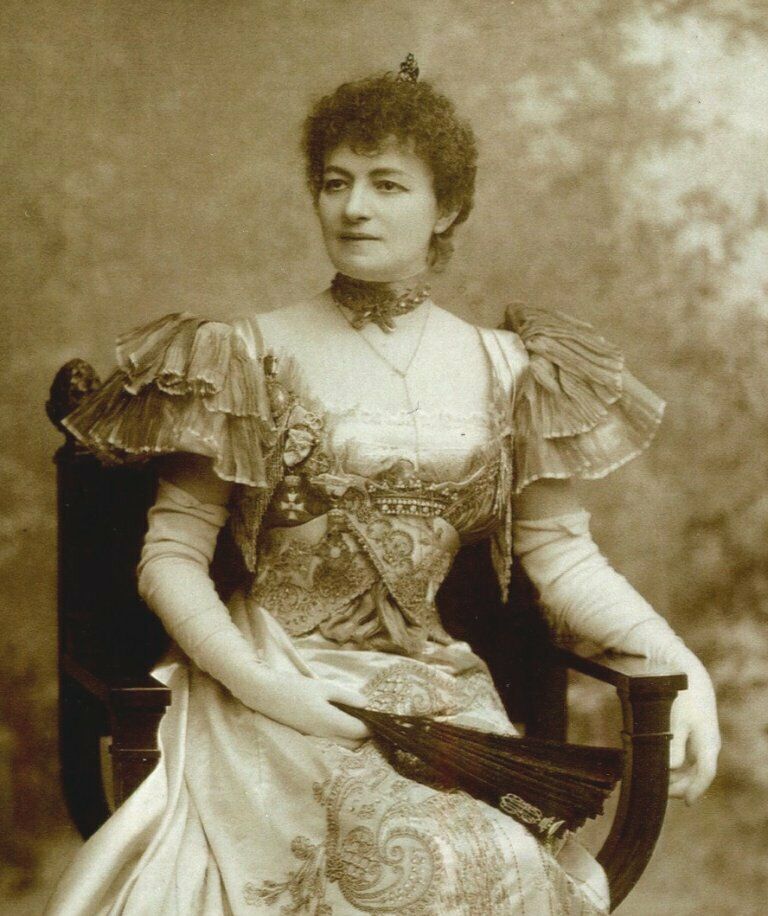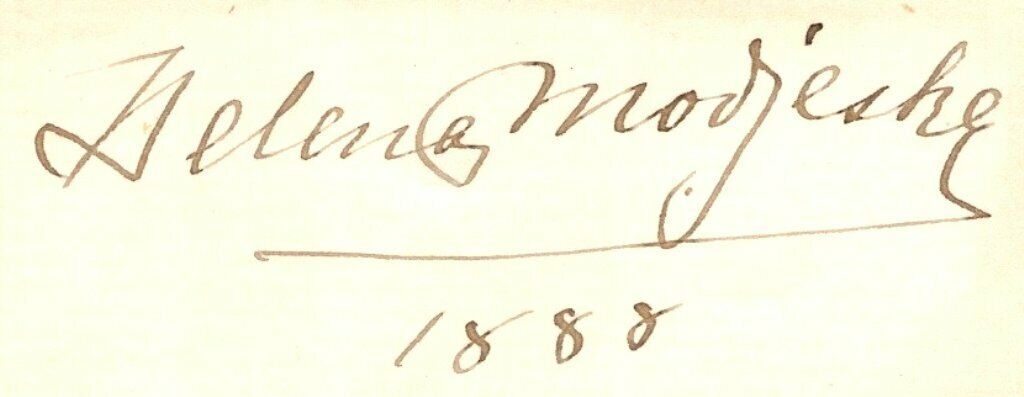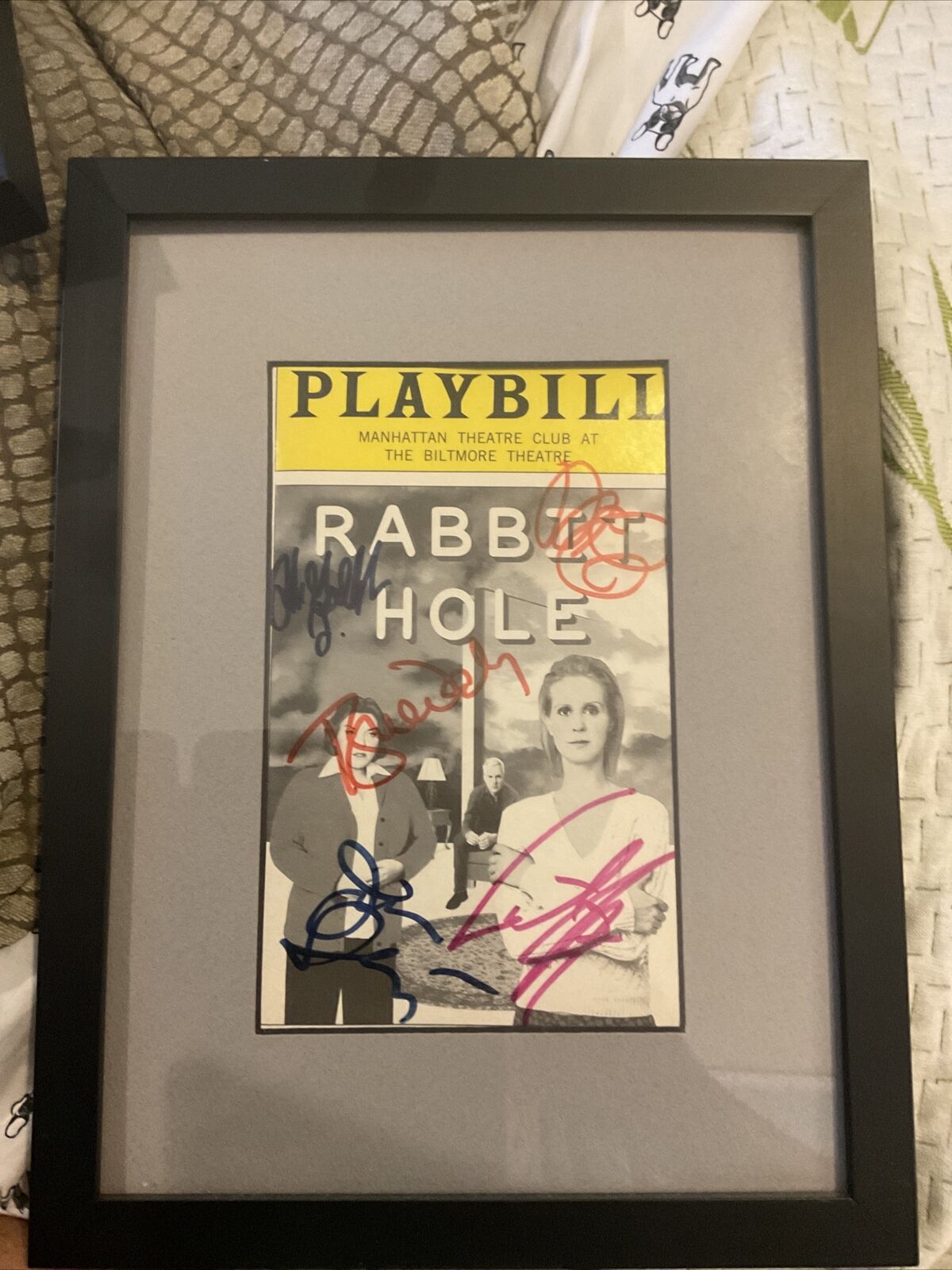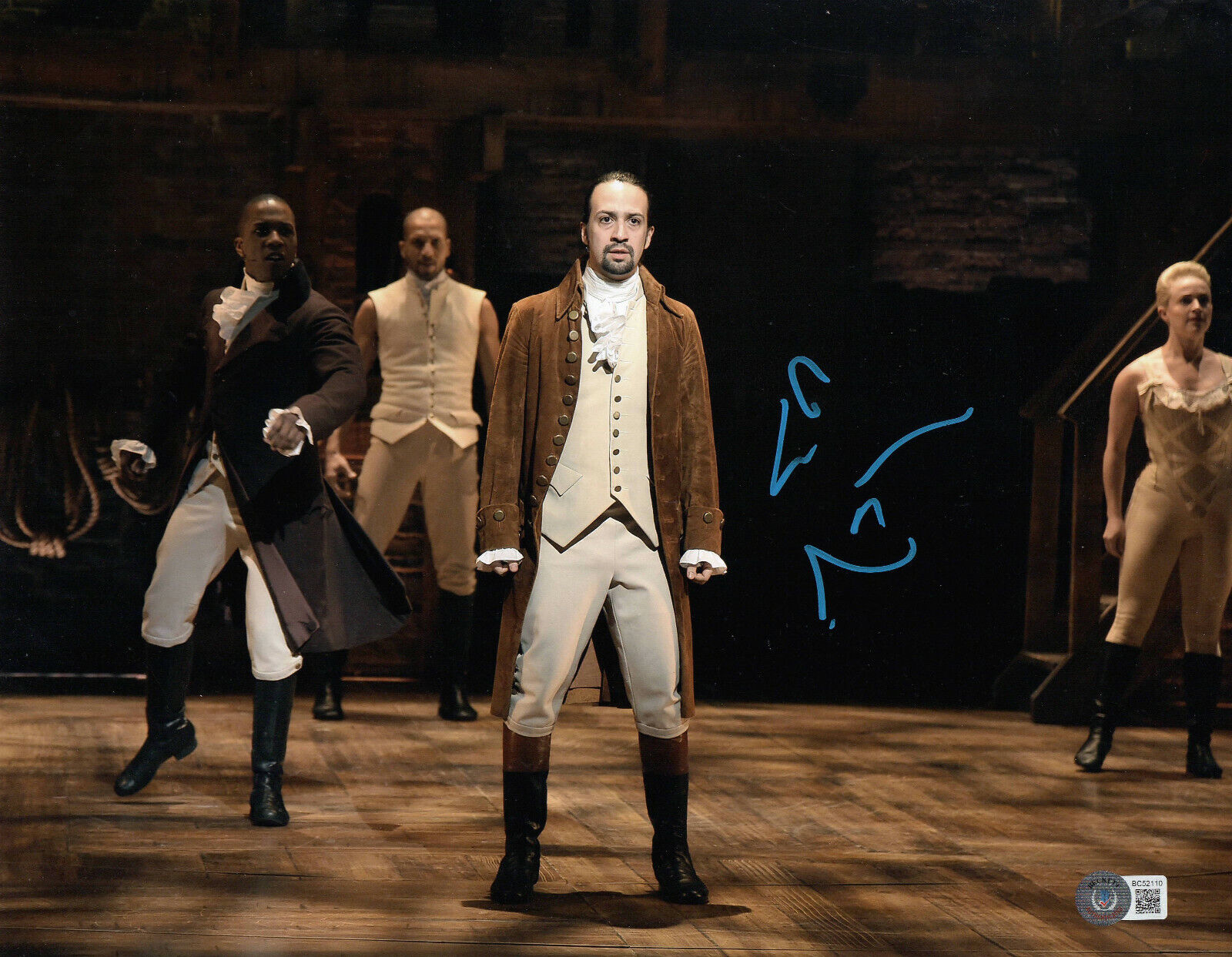-40%
*GREAT POLISH-AMERICAN ACTRESS HELENA MODJESKA 1888 AUTOGRAPH & PHOTO*
$ 42.23
- Description
- Size Guide
Description
She was one of the greatest actresses of her generation, able to enthrall audiences by her skill and personal magnetism. At the height of the Gilded Age she appeared as Edwin Booth's co-star, and Maurice Barrymore was her longtime leading man. A rare original 1888 autograph sentiment of the brilliant Polish born actress Helena Modjeska. Together with a seven by five inch modern photograph of Helena Modjeska. Two pieces. Perfect for matting and framing. Autograph dimensions three and three quarters by two and a quarter inches to card backing. Light wear otherwise good. See Helena Modjeska's extraordinary biography below.Shipping discounts for buyers of multiple items. Credit cards accepted with Paypal. Inquiries always welcome. Please visit my other eBay items for more early dance, theatre and historical autographs, broadsides, photographs and programs and great actor and actress cabinet photos and CDV's.
From Wikipedia:
Helena Modjeska (October 12, 1840 – April 8, 1909), whose actual Polish surname was Modrzejewska was a renowned actress who specialized in Shakespearean and tragic roles.
In July 1876, after spending more than a decade as the reigning diva of the Polish national theater, for reasons both personal and political, Modjeska and her husband chose to emigrate to the United States.
My husband's only desire was to take me away from my surroundings and give me perfect rest from my work...Our friends used to talk about the new country, the new life, new scenery, and the possibility of settling down somewhere in the land of freedom, away from the daily vexations to which each Pole was exposed in Russian or Prussian Poland. Henryk Sienkiewicz was the first to advocate emigration. Little by little others followed him, and soon five of them expressed the desire to seek adventures in the jungles of the virgin land.
My husband, seeing the eagerness of the young men, conceived the idea of forming a colony in California on the model of the Brook Farm. The project was received with acclamation.[17]
Once in America, Modjeska and her husband purchased a ranch near Anaheim, California. Julian Sypniewski, Łucjan Paprowski, andHenryk Sienkiewicz (winner of the Nobel Prize for literature in 1905), were among the friends who had accompanied them to California. It was during this period that Sienkiewicz wrote his Charcoal Sketches (Szkice węglem). Originally the artists Stanisław Witkiewicz (father ofStanisław Ignacy Witkiewicz) and Adam Chmielowski (the future St. Albert) were also to have come with Modjeska's group, but they changed their plans.
Modjeska intended to abandon her career and envisioned herself living "a life of toil under the blue skies of California, among the hills, riding on horseback with a gun over my shoulder."[17] The reality proved less cinematic. None of the colonists knew the first thing about ranching or farming, and they could barely speak English.[18] The utopian experiment failed, the colonists went their separate ways, and Modjeska returned to the stage, reprising the Shakespearean roles that she had performed in Poland.[1][19] Perhaps the best account of daily life on the ranch is Theodore Payne's memoir, Life on the Modjeska Ranch in the Gay Nineties.
American career
On August 20, 1877 Modjeska debuted at the California Theatre in San Francisco in an English version of Ernest Legouvé's Adrienne Lecouvreur and also made her New York debut.[20] She then spent three years abroad (1879–82), mainly in London, attempting to improve her English, before returning to the stage in America.[21] Despite her accent and imperfect command of English, she achieved great success.[22]
During her career she played nine Shakespearean heroines, Marguerite Gautier in Camille, and Schiller's Maria Stuart. In 1883, the year she obtained American citizenship, she produced Henrik Ibsen's A Doll's House in Louisville, Kentucky, the first Ibsen play staged in the United States. In the 1880s and 1890s she had a reputation as the leading female interpreter of Shakespeare on the American stage.[23]
In 1893 Modjeska was invited to speak to a women's conference at the Chicago World's Fair, and described the situation of Polish women in the Russian and Prussian-ruled parts of dismembered Poland. This led to a Tsarist ban on her traveling in Russian territory.
Modjeska suffered a stroke and was partially paralyzed in 1897, but recovered and soon returned to the stage, continuing to perform for several additional years.[25]
During her last stay in Poland, from October 31, 1902 to April 28, 1903, she appeared on the stage in Lwów, Poznań and her native Kraków.
On May 2, 1905, she gave a jubilee performance in New York City. Then she toured for two years and ended her acting career, afterward only appearing sporadically in support of charitable causes.
Modjeska died at Newport Beach, California on April 8, 1909, aged 68, from Bright's disease.[26] Her remains were sent to Kraków to be buried in the family plot at the Rakowicki Cemetery.
